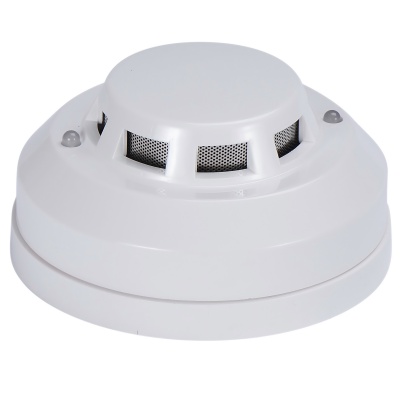

 News
News Industry News
Industry NewsCombustible gas detectors are safety devices used to detect the concentration of combustible gases (such as methane, propane, hydrogen, and carbon monoxide) in the air and sound an alarm before concentrations reach dangerous levels. They are widely used in homes, industries, and businesses.

As a professional company with over 40 years of experience in gas sensing technology, Shanxi Tengxing Sensing Technology Co., Ltd. understands the importance of combustible gas detectors in both industrial safety and daily life. This article will systematically explain the working principles of combustible gas detectors to help you fully understand the core technology of this safety guardian.
1. Core Working Principles
Combustible gas detectors primarily achieve detection through the following three technical principles:
1.1 Catalytic Combustion Principle
Working Mechanism: Utilizing the catalytic combustion effect. When the detector's detection element (a platinum wire coil coated with a catalyst) encounters a combustible gas, flameless combustion occurs on its surface, causing the platinum wire's temperature to rise and its resistance to change. This resistance change is detected using a Wheatstone bridge circuit, and the gas concentration is calculated.
Technical Features:
Excellent linear response for combustible gases such as methane and propane
Measurement range covers 0-100% LEL (Lower Explosive Limit)
High stability and long life
Typical applications: Explosion-proof environments in industries such as the petroleum, chemical, and gas industries.
1.2 Non-infrared absorption principle (NDIR)
Working mechanism: Based on the absorption characteristics of combustible gases in specific infrared bands, the gas concentration is calculated by measuring changes in infrared absorption intensity.
Technical Features:
Unaffected by ambient oxygen concentration
Strong resistance to poisoning and long life
Suitable for oxygen-deficient environments
Typical applications: High-risk environments such as the petrochemical industry and natural gas transportation.
1.3 Semiconductor principle
Working mechanism: Utilizes the property that metal oxide semiconductor materials (such as tin dioxide) change in conductivity when heated and exposed to combustible gases.
Technical Features:
High sensitivity
Low cost
Suitable for trace leak detection
Typical applications: Household gas alarms and portable gas detectors.
2. Detector Workflow
2.1 Gas Sensor Detection: The sensor detects changes in combustible gas concentration in the environment.
2.2 Signal Conversion: Converts gas concentration into an electrical signal (analog/digital).
2.3 Signal Processing: A microprocessor amplifies, filters, and temperature compensates the signal.
2.4 Concentration Calculation: A built-in algorithm calculates the precise gas concentration.
2.5 Alarm Detection: Triggers an audible and visual alarm when the concentration exceeds the preset threshold.
2.6 Signal Output: Outputs an alarm signal via 4-20mA, RS485, or relays.
3.Technology Comparison and Selection Guide
| Principle Type | Detection Range | Advantage | Limitation | Applicable Scenario |
| Catalytic Combustion | 0-100% LEL | Linear output, good stability | Requires oxygen environment, prone to poisoning | Industrial explosion-proof locations |
| Infrared | 0-100% LEL | Strong anti-interference, long lifespan | Higher cost | High-risk industrial applications |
| Semiconductor Type | 0-10,000 ppm | High sensitivity, low cost | Affected by temperature and humidity | Home and commercial use |
4. Tengxing Sensing's Technical Advantages
✅ Multi-Technology Platform: Provides detectors based on various principles, including catalytic combustion, infrared, and semiconductor.
✅ High Reliability: Industrial-grade products comply with national standards such as GB15322 and EN50194.
✅ Intelligent Algorithm: Equipped with temperature compensation and fault self-diagnosis to reduce false alarms.
✅ Customized Service: We can customize the range, output signal, dimensions, and other features to meet your needs.
5. Recommended Application Scenarios
Industrial explosion-proof environments: Catalytic combustion or infrared detectors are recommended.
Home/commercial use: Semiconductor detectors offer better value for money.
Special environments (hypoxia, high temperatures): Infrared detectors are the best choice.
6. Get Professional Solutions Now
Shanxi Tengxing Sensing Technology Co., Ltd. provides comprehensive combustible gas detection solutions, from sensor modules to complete systems, to protect you!